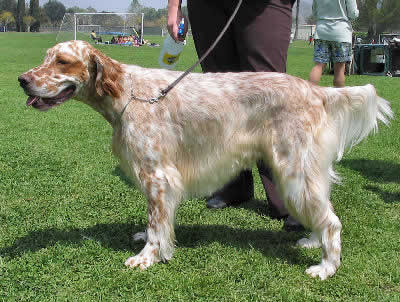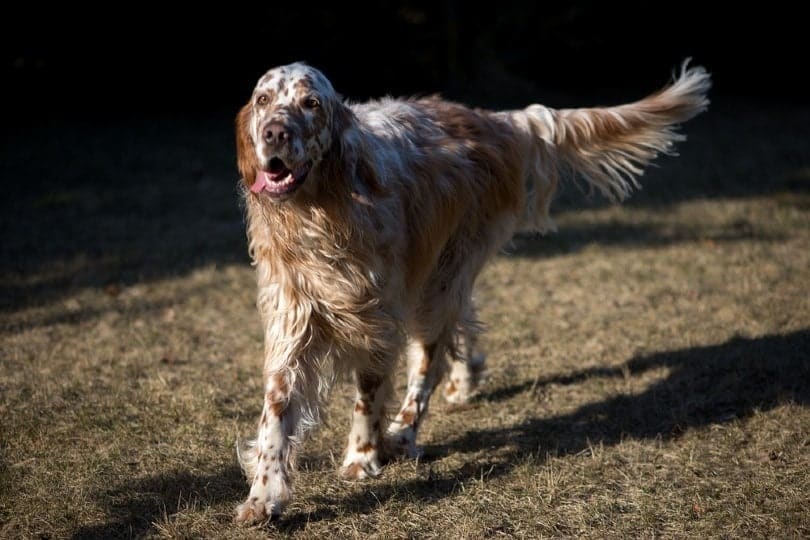
Known for its endurance, the English Setter is most commonly used as a bird dog, as well as being a good pet.
English Setters are very peaceful dogs that are great with children. They are affectionate and enjoy human companionship. They are fairly inactive indoors, but when outside they love to run and play. When choosing an English Setter, look for elbow and hip dysplasia, deafness, and thyroid problems.
- Kingdom: Animalia
- Phylum: Chordata
- Class: Mammalia
- Order: Carnivora
- Family: Canidae
- Genus: Canis
- Species: lupus familiaris
Common Name(s)
English Setter, Laverack, Llewellin Setter
Breed Type
The English Setter is a sporting breed known for its endurance. They are most commonly used as bird dogs.
Background
The English Setter is believed to have originated over 400 years ago. Its lineage may have included the Spanish Pointer, Water Spaniel, and Springer Spaniel. The breed was first shown in 1859.
Description
The English Setter is white, speckled with blue, lemon, orange, or brown. Its hair is silky and long. The muzzle is fairly long and square, the eyes large and hazel, and the ears long. The English Setter’s tail is long and fringed. Males measure 24-27 inches tall and weigh 55-80 pounds. Females are 23-26 inches tall and weigh 45-70 pounds.
Care and Feeding
English Setters need logs of carbohydrates and fiber, and low protein in their diets. The best foods contain poultry, lamb and brown rice. They are prone to weight gain, so it is important not to overfeed. English Setters should be combed and brushed regularly, and bathed only when needed. Feet need special attention, including trimming the bottoms of them and clipping nails as needed.
English Setters need regular checkups. Vaccinations are due as follows:
- 6-8 weeks: Distemper, Leptospirosis, Hepatitis, Parainfluenza, Parvo, and Corona virus (DHLPPC)
- 10-12 weeks: Second DHLPPC
- 14-16 weeks: Third DHLPPC and rabies
- Annually: DHLPPC and rabies booster
This breed sheds moderately. Regular vacuuming is necessary if kept inside.
Housing Your Dog
The English Setter is best suited to outdoor living. If kept indoors, it is crucial to let them out to play regularly.
Social Behaviors
English Setters are great with children, and they enjoy having other dogs around to play with. They also need plenty of human companionship.
Handling and Training
The English Setter is a strong-willed breed, so training should be started early for best results. Housebreaking may be difficult.
Activities
English Setters need plenty of exercise, including a daily walk and plenty of time to play outdoors.
Breeding/Reproduction
This breed is not very prone to genetic disorders. When selecting a mate, the main things to look for in the bloodline are hip and elbow dysplasia, deafness, and hyperthyroidism.
Common Health Problems
Female English Setters sometimes have false pregnancies. Joint problems and obesity are common ailments. Both of these can potentially be prevented by carefully monitoring your dog’s weight.
Availability
English Setters may be difficult to find in some areas, but can be located online. Prices usually run between $400 and $800.
References
“English Setter“, Wikipedia, Copyright 2008
“English Setter“, Dog Breed Info Center, Copyright 1998-2008
Cusick, William D., “What to Feed an English Setter“, Referenced online, 2008
“English Setter Puppies for Sale“, Copyright PuppyFind.com, LLC, Referenced online, 2008
Featured Image Credit: Zelma Brezinska, Shutterstock
